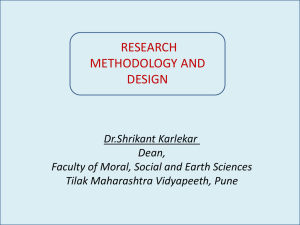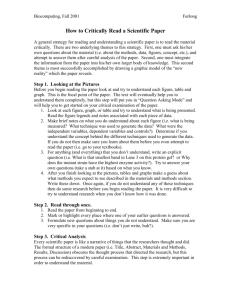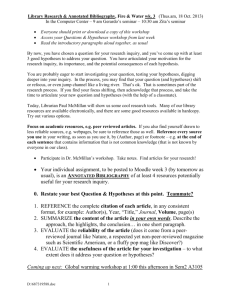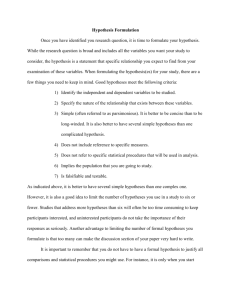ESM- Chapter 3 - WordPress.com
advertisement
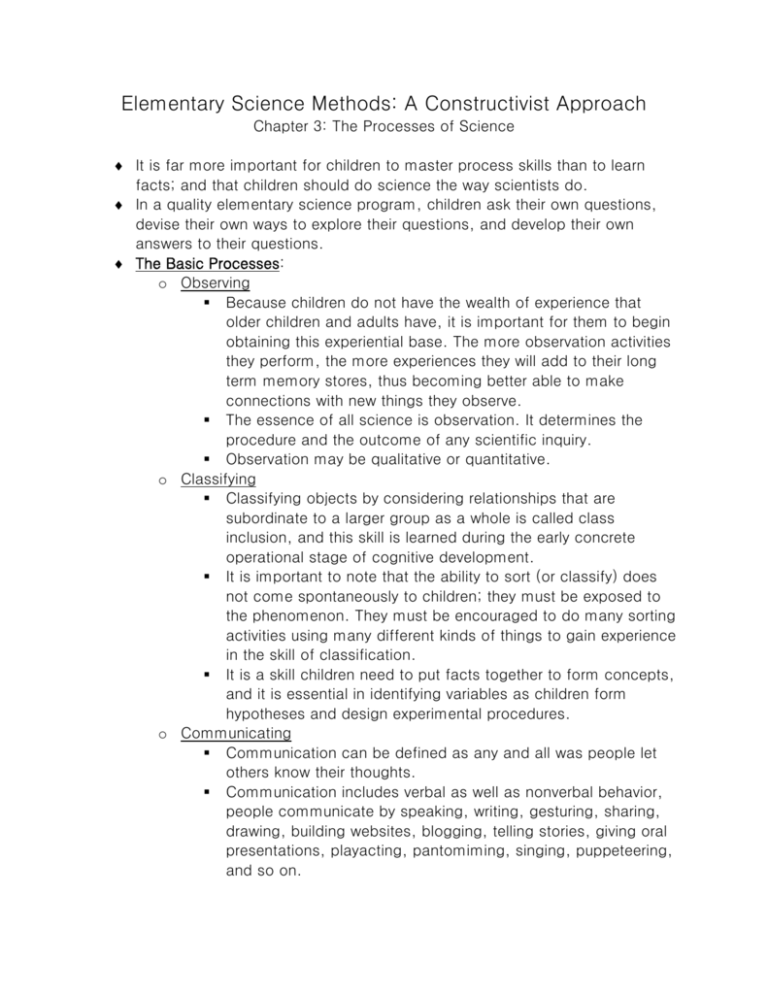
Elementary Science Methods: A Constructivist Approach Chapter 3: The Processes of Science It is far more important for children to master process skills than to learn facts; and that children should do science the way scientists do. In a quality elementary science program, children ask their own questions, devise their own ways to explore their questions, and develop their own answers to their questions. The Basic Processes: o Observing Because children do not have the wealth of experience that older children and adults have, it is important for them to begin obtaining this experiential base. The more observation activities they perform, the more experiences they will add to their long term memory stores, thus becoming better able to make connections with new things they observe. The essence of all science is observation. It determines the procedure and the outcome of any scientific inquiry. Observation may be qualitative or quantitative. o Classifying Classifying objects by considering relationships that are subordinate to a larger group as a whole is called class inclusion, and this skill is learned during the early concrete operational stage of cognitive development. It is important to note that the ability to sort (or classify) does not come spontaneously to children; they must be exposed to the phenomenon. They must be encouraged to do many sorting activities using many different kinds of things to gain experience in the skill of classification. It is a skill children need to put facts together to form concepts, and it is essential in identifying variables as children form hypotheses and design experimental procedures. o Communicating Communication can be defined as any and all was people let others know their thoughts. Communication includes verbal as well as nonverbal behavior, people communicate by speaking, writing, gesturing, sharing, drawing, building websites, blogging, telling stories, giving oral presentations, playacting, pantomiming, singing, puppeteering, and so on. Graphs, charts, concept maps, graphic organizers, diagrams, posters, symbols, maps, and mathematical equations are ways to communicate data gathered during an investigation. o Measuring Elementary school children measure five basic entities in science: (1) length, (2) volume, (3) weight or mass, (4) temperature, and (5) time. Length is defined as the distance between two points. Volume is the space occupied by a given object. Weight is the pull of gravity on something, and mass is the amount of material in that something. The US is one of very few countries that still use the conventional system. The world of science uses the metric system. o Predicting A great deal of scientific inquiry begins with predicting the result of an investigation and then testing to see if the predicted result occurs. Prediction is an individual’s best guess as to what will happen next in a given situation—what would happen if you did something. o Inferring Very often, we form conclusions based on inferring, and in science, inferential reasoning is used extensively. Inference is a person’s best guess as to why something happened. In inference we have to guess what caused something to happen. The Integrated Processes o They are interdependent and almost never taught in isolation. o They require deeper levels of thought than do the basic skills. o Many children in early elementary grades are not capable of the thinking associated with true comprehension of variable identification, variable isolation, hypothesis formulation and testing, operational definition, experiment planning and execution, data interpretation, and model development. o Identifying and Controlling Variables In any scientific investigation, the system we are investigating will have many variables. In many scientific inquiries, we investigate to find out what causes something to happen—to pinpoint the cause, we must o o o o keep all the variables constant except the one with which we are experimenting. Formulating and Testing Hypotheses Hypotheses are formulated about what would happen if you varied each of several factors. A hypotheses is a statement of your best guess as to the relationship between two variables. Hypotheses formulation is different from prediction. In prediction, we simply ask what would happen if we did something. In hypotheses formulation, we ask what would happen to one variable if we change an interacting variable. When we test hypotheses, we assure ourselves that we have identified all the variables that we can, have taken steps to control all except the one we are experimenting with, have planned what we are going to do to test our hypothesis, and have identified the information we need to obtain so that we can make conclusions about our hypothesis. Interpreting Data One of the best ways to organize data for interpretation is to put the data in visual form, such as a graph, chart, or histogram. Interpreting data is not difficult once you have decided what kind of data you need. However, suppose you don’t know what kind of data to collect. In that case, you simply tinker with the activity to get an idea of what is happening, then decide what you need to find out to be able to answer the question. In many life science activities, qualitative data is the only kind available. Defining Operationally Accurate communication is of paramount importance in science. It is often necessary to define things in terms of something that everyone will understand. Defining a variable that cannot be measured or seen easily in terms that everyone understands in the same way is called defining operationally. This involves finding equivalent ways of measuring something indirectly that cannot be conveniently measured directly. Experimenting Experimenting is the scientific process in which the investigator explores the effect that a change in one variable has on the change in a different, interacting variable. Experimenting is different from formulating hypotheses. A hypothesis is a guess about what might happen if you were to do something. One variable is identified, and its effect on a different interacting variable is hypothesized. No methodical attempt is made to examine the effect of changing one variable on a possible change in the other variable. An experimental plan is developed that includes the procedure, the nature of the observations needed, and the data to be collected. The experiment is carried out, and the data is obtained. o Constructing Models Models are concrete representations of things or phenomena that we cannot readily see; models focus on key features in order to explain and predict scientific phenomena. One of the difficulties involved in building models is that the actual spatial relationships often are of such gigantic proportions that it becomes necessary to compress the dimensions into something manageable for the model. As a result, models often are distorted to fit into the space available. Models are extremely powerful tools. They present concrete and visual representations that make lasting impressions. Therefore, it is vitally important to present models that correctly represent what they are portraying. It is far more difficult to replace an erroneous model with the correct one than it is to provide the correct one in the first place.


